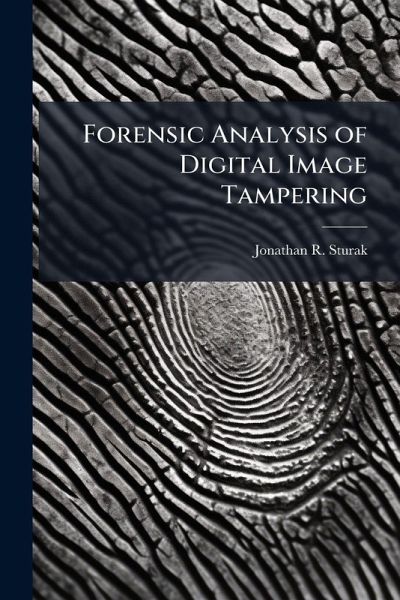
Forensic Analysis of Digital Image Tampering
Versandkostenfrei!
Versandfertig in über 4 Wochen
17,99 €
inkl. MwSt.
Weitere Ausgaben:

PAYBACK Punkte
9 °P sammeln!
The use of digital photography has increased over the past few years, a trend which opens the door for new and creative ways to forge images. The manipulation of images through forgery influences the perception an observer has of the depicted scene, potentially resulting in ill consequences if created with malicious intentions. This poses a need to verify the authenticity of images originating from unknown sources in absence of any prior digital watermarking or authentication technique. This research explores the holes left by existing research; specifically, the ability to detect image forger...
The use of digital photography has increased over the past few years, a trend which opens the door for new and creative ways to forge images. The manipulation of images through forgery influences the perception an observer has of the depicted scene, potentially resulting in ill consequences if created with malicious intentions. This poses a need to verify the authenticity of images originating from unknown sources in absence of any prior digital watermarking or authentication technique. This research explores the holes left by existing research; specifically, the ability to detect image forgeries created using multiple image sources and specialized methods tailored to the popular JPEG image format. In an effort to meet these goals, this thesis presents four methods to detect image tampering based on fundamental image attributes common to any forgery. These include discrepancies in 1) lighting and 2) brightness levels, 3) underlying edge inconsistencies, and 4) anomalies in JPEG compression blocks. Overall, these methods proved encouraging in detecting image forgeries with an observed accuracy of 60% in a completely blind experiment containing a mixture of 15 authentic and forged images. This work has been selected by scholars as being culturally important, and is part of the knowledge base of civilization as we know it. This work was reproduced from the original artifact, and remains as true to the original work as possible. Therefore, you will see the original copyright references, library stamps (as most of these works have been housed in our most important libraries around the world), and other notations in the work. This work is in the public domain in the United States of America, and possibly other nations. Within the United States, you may freely copy and distribute this work, as no entity (individual or corporate) has a copyright on the body of the work. As a reproduction of a historical artifact, this work may contain missing or blurred pages, poor pictures, errant marks, etc. Scholars believe, and we concur, that this work is important enough to be preserved, reproduced, and made generally available to the public. We appreciate your support of the preservation process, and thank you for being an important part of keeping this knowledge alive and relevant.




![Acr: Photos Lr 3 Classroom Book_p1 [With CDROM] Cover Acr: Photos Lr 3 Classroom Book_p1 [With CDROM]](https://bilder.buecher.de/produkte/27/27984/27984720n.jpg)







